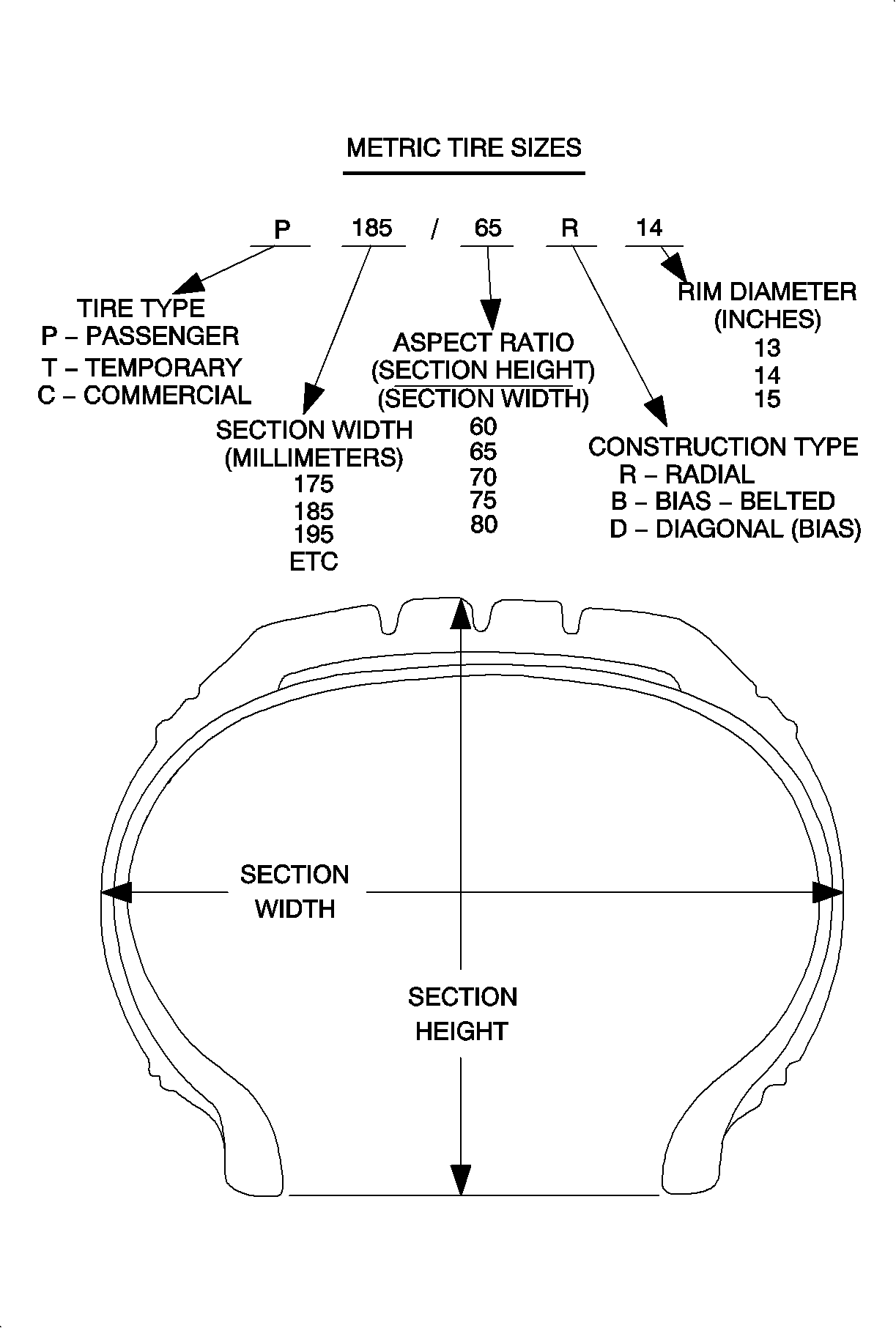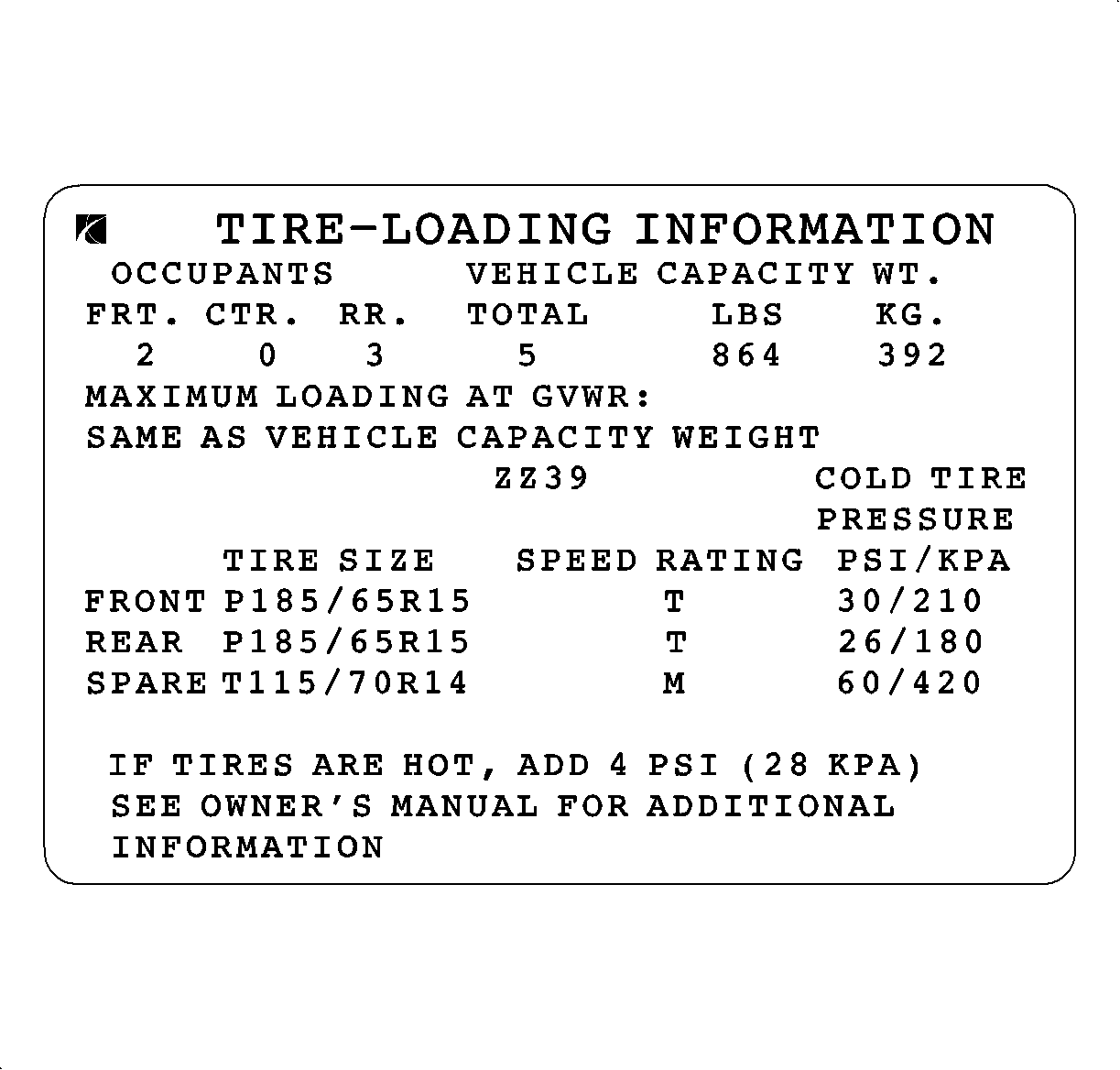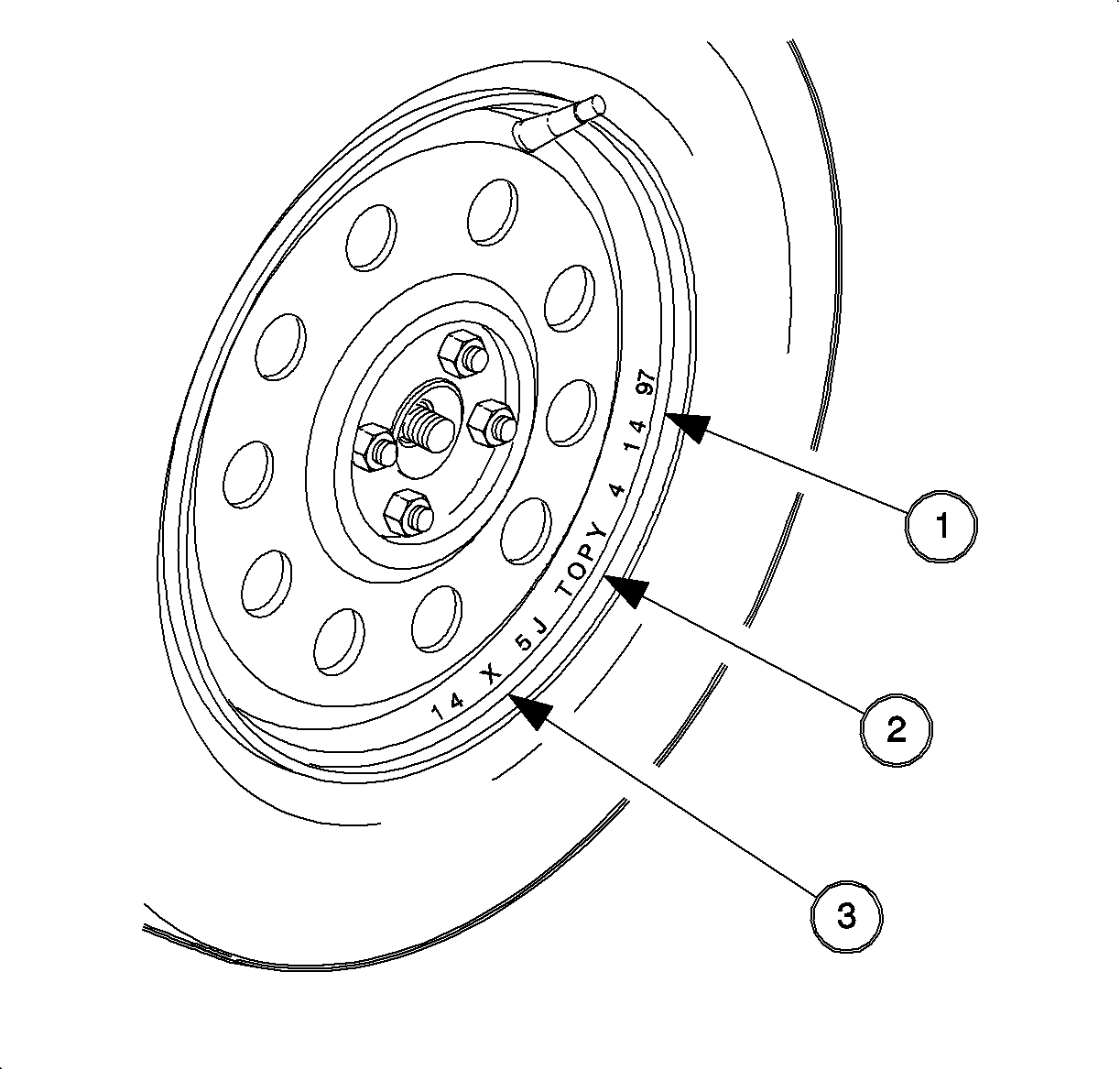Tire Replacement

All models are equipped with metric sized steel belted radial tires. The metric tire size format is shown in the illustration. When replacement is necessary, the original equipment type tire should be used.

Refer to the Tire Loading Information sticker located on the driver's door opening below the door striker -- coupe, or rear edge of the driver's door -- sedan and wagon.
Most metric tire sizes do not have exact corresponding alphanumeric tire sizes. Replacement tires should be of the same size, load range, and construction as those originally equipped with the vehicle. The use of any other size or type tire may affect vehicle ride, handling, speedometer/odometer calibration, vehicle ground clearance, tire to body or chassis clearance, and snow chain to body or chassis clearance.
Notice: Do not mix tires or wheels of different size or construction on vehicle. Vehicle handling may be seriously affected. A loss of control could occur.
It is recommended that new tires be installed in pairs on the same axle. If necessary to replace only one tire, it should be paired with the tire having the most tread to equalize braking traction.
Compact Spare Tire
Caution: The compact spare tire should be used only on vehicles originally equipped with a compact spare tire. Use of a compact spare tire on a vehicle not designed to use one can result in vehicle damage or loss of vehicle control.
Saturn vehicles are equipped with a high pressure, compact spare tire. This type of spare tire is mounted on a narrow, four inch wide rim.
Notice: Do not attempt to mount standard tires, snow tires, wheel covers, trim rings, or other accessories to compact wheel. Doing so may damage these items or other parts of vehicle.
The correct inflation pressure for the compact spare tire is 415 kPa (60 psi). The tire should be checked periodically for correct inflation pressure.
The compact spare tire is mounted and dismounted in the same manner as the standard tires equipped on the vehicle. Refer to the tire installation section of this manual for proper tire installation procedure.
Wheel Identification
Steel Wheel

Wheel identification information for steel wheels is located on the outside face of the wheel.
- Date of manufacturer - Month/Day/Year
- Name of manufacturer
- Wheel size
Aluminum Wheel

Identification information for the aluminum wheels is located on the inside face of the wheel.
Arrows show the location of:
- The wheel size
- The wheel manufacturer
- The part number
